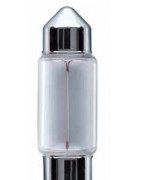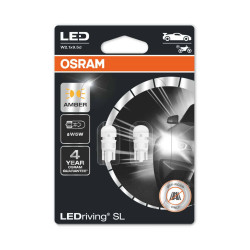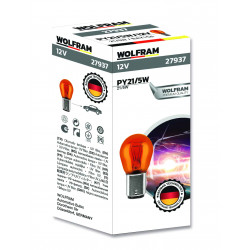Subcategories
-
Stop Signal Car Lights
A car has several stop and signalling lighting devices: route light indicators, brake lights, side marker lights, hazard warning lights, reversing lights, rear fog lights and the car position lights. These signalling devices are used by drivers to communicate to other road participants what they intend to do. Light signals give a attention warning to other road users that you intend to make a specific manoeuvre.
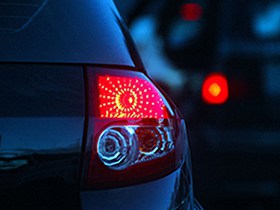
Car signalling light bulbs
Giving appropriate car light signals at the correct time and place, and correctly interpreting the signals of other road users, is important for the safety of all traffic participants.
Your car light signals must be given in a proper time before you start your car manoeuvre and for long enough for their meaning to be clear to other road users.
Indicator car lights are amber colored and can be located at the front, the rear, and at the side of the car on both the left and right sides. You will use your car indicators lights to show an intended change of direction, whether turning left or right or steping into traffic. Use the indicator car lights properly, giving other road users plenty of time to react and adapt to your signal. Once you have completed the manoeuvre, make sure the indicator lights has been cancelled, or you may confuse other road users.
When you press the brake pedal, two rear warning lights are activated. These lights are called brake lights signals. This signals are showing to traffic behind you that you are slowing down. The brake lights are in red color and are more powerful than the position car lights.
When you turn on your hazard warning lights, every indicator light of the car has begins to flash. You turn on your hazard warning lights when you need to warn other road participants of a hazard as your car has technical difficulties and is obstructing the traffic, or to warn other road users of an ahead unexpected event or obstacle.
When a car is put into reverse gear either one or two white lights are activated at the rear of the car. These are the reverse mode car lights.
Car front and rear position lights and car side marker lights, provide nighttime standing-vehicle conspicuity and mark the outer limts of the car. Together with rear fog lights they are completing the car signalling lights types.
The next section will introduce and offer you all the 12V metal base car bulbs that you may need to replace a broken signalling car light from stop and signal category.
-
Mini Series Car Lights
Car signal lights have an important safety function. They demonstrate deceleration and a change in direction of the vehicle, and make the car more visible to other road participants when it is dark or during poor visibility.
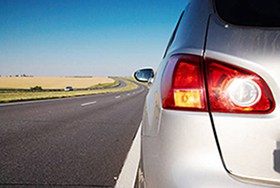
Miniature glass wedge car bulbs
Miniature series glass wedge car bulbs are used for front and rear position lights, indicator lights, side marker lights, parking lights, side turn signal, rear fog lights, reversing lights, rear registration plate lights, trunk lights, and interior comfort lights. They are part of stop and signal car bulbs category.
This glass wedge base small car bulbs type used by cars have the purpose of increasing the vehicle's visibility, allowing other road participants to see its presence, position, vehicle size, direction of travel, and its driver's intentions.
A wedge base is a type of electrical connector used as a fitting for small light bulbs. It is similar to the dual pin connector, except that the two "pins" are the same wires that extend inside the bulb, rather than being rigid, and the wires are bent up onto the sides of the base, where they make contact with the bulb socket.
The glass wedge car miniature bulb is inserted and removed with straight in or out force, without turning on as with metal base. Sometimes the glass wedge car small bulb may have dual filaments, acting as both a low-wattage tail light or parking light and a higher-wattage brake light or turn signal. In this case, one has its contacts near the center of the base, and the other toward the outside edges, so that they cannot be accidentally swapped. Along with putting contacts on the opposite or alternating sides, this gives the glass base rotational symmetry so that the user does not have to determine the exact position of the old broken bulb before inserting a new replacement car bulb as the inserting position can be randomly choosen.
The ECE types for the miniature glass wedge car bulbs are: T5, T10, T15, and T20. They are in clear type and orange colors models and may have double filaments for dual car lighting tasks.
-
Festoon Car Lights
Festoon 31mm, 36mm, and 41mm car light bulbs are used for front and rear position lights, side marker lights, indicator light signal, rear fog lights, reversing lights, rear registration plate lights, interior comfort lights, dome lights, map reading light, inside mirror lights, footwell lights, and trunk light. These festoon light bulbs types used by cars have the purpose of increasing the vehicle's visibility, allowing other road participants to see its presence, position, vehicle size, direction of travel, fulfilling the car driver and passengers interior comfort and, generally speaking, showing the driver's future intentions of following the road.

Festoon halogen and LED car light bulbs
The word "festoon lamp" generally refers to a double-ended miniature lightbulb. The festoon car lamps focus on safety and weather resistant with great IP ratings.
The car festoon lamps design and fabrication it is about using a small incandescent lamp soldered on metal trims. The incandescent filament of car festoon bulbs is linear. The philosophy of festoon light bulbs is about linear lighting comparing with the spot radial lighting emitted by regular round light bulbs.
In automotive industry the festoon halogen light bulbs are manufactured in three length dimensions: 31mm, 36mm, and 41mm. The electric power used by halogen festoon car lamps it is of 5W and 10W. In the case of LED sofit car lighting bulbs the elctric power used is 0.80W much less than standard halogen sofit bulbs.


